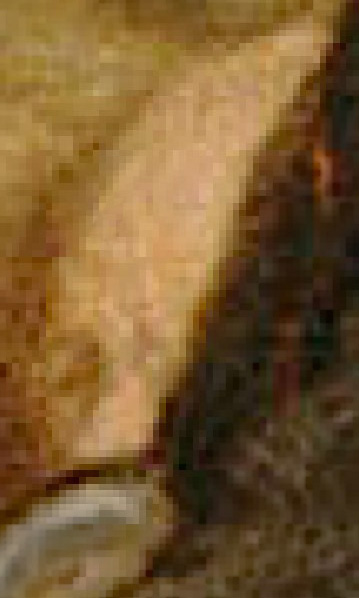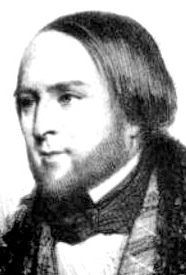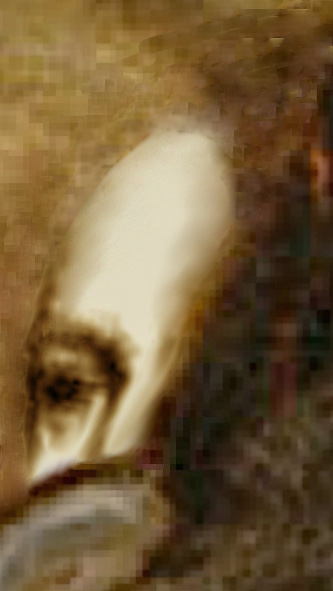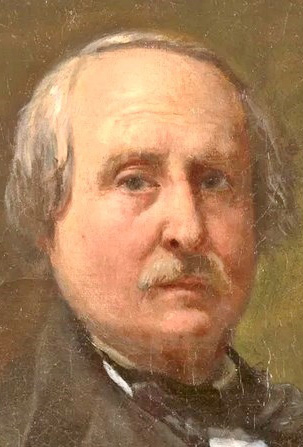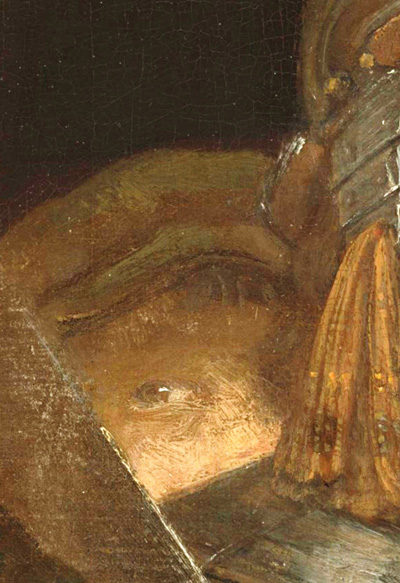François-Auguste Biard (1799 – 1882) painter
1st image: Soirée; 2nd: autoportrait (c.1845); 3rd: superposition 1 & 2 ; 4th: autoportrait (1860); 5th: autoportrait (1870); 6th: Rembrandt partial face in his Night Watch (1642).
One curious detail in Une Soirée au Louvre is the presence of two partial faces. With seventy-eight other figures depicted, Biard must have deliberately included these two —perhaps as an Easter egg or signature.
In commissioned paintings, artists sometimes may add subtle self-portraits as long as they do not compete with the painting’s main subjects. Notable examples include Raphaël in The School of Athens (1511), Rembrandt in The Night Watch (1642) (see also image 6), and Courbet in his non-commissioned A Burial at Ornans (1850).
Although some sources claim that Biard depicted himself as one of the guests in the background, this would be highly unusual for a commissioned painting. However, in line with the tradition that existed via Raphael and Rembrandt, Biard may have left his own mark by partially including himself in the background. The face in this position has a fair match. See my analysis of the other partially depicted person (Léopold Heugel68) for comparison.

François-Auguste Biard, a French painter known for his landscapes, humor, and exotic subjects, lived a career marked by public acclaim and personal struggles.
His works blended sensation (Polar Bears, La Chasse des morses par des Groenlandais au mer polaire), orientalism (Slave Trade, Shipwrecked), and satire (Triomphe d'un Ténor dans une Matinée Musicale) (Video).
While beloved by audiences, art critics were often less impressed.
Why was this major commission awarded to Biard —an entirely self-taught artist with little experience in grand historical compositions— rather than François-Joseph Heim28b, a renowned master of the genre?
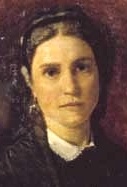
The likely answer lies in his then-wife, Léonie d’Aunet.
At twenty years old and pregnant, Léonie married Biard in 1840.
Composer and pianist Frédéric Chopin, never one for tact, once described Biard as "very ugly, a history painter, not very famous."
Léonie possessed an artistic spirit, which found kindred excitement upon meeting Victor Hugo in Pradier's03 atelier in 1843. By 1844, she and Hugo had begun exchanging love letters.
Biard, a deeply jealous man, suspected Léonie of an affair with an actor. Hiring a detective agency (Tricoche, ironically the name later used by Halévy19 in his 1872 play Tricoche et Cacolet), he had her followed.
On July 5, 1845, Biard enlisted the police and discovered Léonie in bed with Victor Hugo —a scandalous revelation. Hugo, newly appointed as a Peer of France, was legally shielded from prosecution, but Léonie was not. She was imprisoned for two months and confined to an Augustine convent for six. Note that French law (Penal code 1810) stated that imprisonment of Léonie, the adulterous wife, is possible if Biard, her husband, prosecutes her.
Upon her release, Léonie resumed her affair with Hugo until 1851. Interestingly, Hugo’s wife, Adèle —despite Hugo’s long-term affairs with Juliette Drouet and Alice Ozy— later assisted Léonie in launching her literary career. It was on Hugo's request that Léonie started to write about her poor infancy. Part of her life story became eternalized as the character Cosette in Hugo's Les Misérables (1862).
Biard, heartbroken and humiliated, became fodder for the gossip press. Perhaps out of sympathy, perhaps also because Heim had too many ongoing commissions, Napoleon III funneled funds from de Nieuwerkerke’s Beaux-Arts administration toward commissioning this and other work to Biard. Viel-Castel makes mention of Biard after a dinner with princess Mathilde in July 1851. Given the fact that sculptor Pradier died in June 1852 but is included in Soiree au Louvre, the commission probably happened around or just after summer 1851.
After completing Une Soirée au Louvre in 1855 and finalizing his divorce from Léonie, Biard embarked on an extended expedition to South America. He ultimately withdrew from painting, spending his final years in quiet isolation near Fontainebleau.
